Contents
A wire stripper may be one of the must-have tools in DIY enthusiasts’ and electricians’ toolkits. A high-quality wire stripping tool is essential for a good wiring to ensure a reliable connection. These wire strippers come in different types and sizes. We’ll dive into everything you want to know about these functional tools.
What is Wire Stripper and How is it Used?
As the name implies, a wire stripper is a handheld tool that helps securely remove various electrical cables' outer protective cover. Stripping the insulation at the end of a cable allows for a connection to another cable or terminal. Whether you are a professional or a novice, a wire stripping tool is necessary for different wiring projects.
Most wire strippers on the market also have the function of cutting like scissors and pliers, but their primary purpose is to strip the insulation of cables. There are a variety of wire strippers on the market, coming in different sizes and types. Generally, small wire strippers are used for low-voltage wires, and standard wire strippers are appropriate for almost all home wiring.
Wire Stripper Types
There are various wires stripper used in different applications, and there are three common types of wire stripping tools: gauged, self-adjusting, and adjustable.
Gauged Wire Stripper
A gauged wire stripper is the basic type, and you may often see your electrician carry this for your home wiring projects. This wire stripper has various small notches or cutting blade slots, and each notch corresponds to different wire gauges. When using this type of wire stripper, you should match the wire gauge to the right notch. In general, these gauged wire strippers have precise notches for easy operation. Once you choose the correct notch, stripping the cable could be accessible, even if you have never stripped a cable. But you should also be careful to strip your cable because a too big or small notch will damage your wires.

Adjustable Wire Stripper
This type of wire stripper has a basic design and only features one notch, but it usually comes with an adjustable screw or jaw that allows you to adjust the tool to a specific wire gauge. It could be convenient for you if you work with cables with different gauges. But you should remember to adjust the tool or your cables will be damaged.
Self-adjusting Wire Stripper
Self-adjusting wire stripper is also named as an automatic wire strippers. This tool is an improved version of the typical wire stripper and is usually more expensive. It helps strip the cable quickly without your own effort. The tool can be automatically adjusted to the correct size and has a setting to control the length of your stripping.

Wire Stripper Features
As you have already known different types of wire strippers, it’s time to understand the construction. Different wires strippers feature different construction, but they have the fundamental part:
- Ergonomic handle
- Stripping blade slot
- Crimping area
- Labor-saving spring
- Wire cutter
So, how to find an ideal wire stripper for electrical projects? To make your investment worthwhile, you should consider the following features:
- A comfortable handle is essential if you need to strip many wires. The ergonomic rubber handle is designed to make your operation comfortable without hurting your hands.
- Many DIY projects require wire stripping and cutting, so you’d better choose a tool that can function as a wire stripper or cutter. Sometimes crimping is also necessary; just pick one based on your needs.
- If you’re looking for a gauged wire stripper, choose one with well-defined gauge markings so that you can strip wires easily according to the guide.
- Always choose the wire stripper with a bright color so that you can easily find them in your toolkit box, and it also helps prevent losing them.
- A spring-loaded handle allows for a labor-saving operation, especially when you use the tool with only one hand.
How to Use Wire Stripper?
Before using the wire stripper, please note the following things.
- Wires, especially thin wires, are susceptible to damage, so you need to choose a proper stripping tool and use it carefully.
- You’d better know the gauge of the wire to match it to the corresponding slot. But if you don’t know the gauge, place the wire to different notches to match the correct gauge.
- Electricians may work with living wires, but it can be potentially dangerous for you to strip living wires. So you should ensure that they are not live before stripping them. In addition, wire stripping tools with insulation can be safer.
Wire strippers are generally used for various cables, including coaxial cables, HDMI cables, and Ethernet cables. We’ll talk about the operation of wire stripping.
Step 1: Identify your needs and choose the right wire stripping tool
First of all, you should know the gauge of the wire you will strip. The gauge can often be found on the outer sheath of the wire. And you can choose different types of wire stripping tools based on your needs. Gauged wire strippers are the basic tools for stripping, and self-adjusting strippers are the most convenient and labor-saving tool. For Ethernet cable stripping, a mini wire stripper is also a good choice for carrying around.
Step 2: Match the wire to the corresponding gauge
Match the wire gauge to the appropriate notch on the wire stripper. A large notch will make your stripping difficult and a too small hole can damage your wire, so this step is very important.
Step 3: Open the wire stripper and strip the wire with cautions
Put the cable into the notch of the wire stripping to remove the outer insulation. You’d better use one hand to hold the wire and the other to use the stripping tool.
For more information on this topic, you can keep up on our blogs. While VCELINK offers general and basic information for our customers and other visitors to the website, it’s not professional advice.
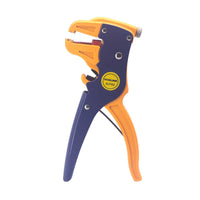
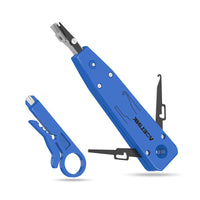
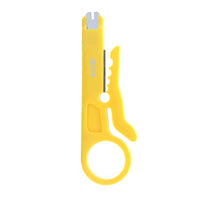

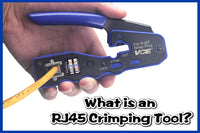
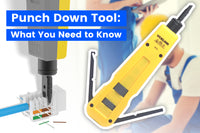
Be the first one to comment.
Leave a comment